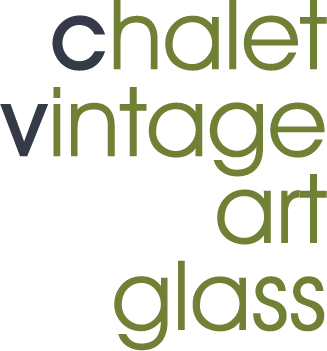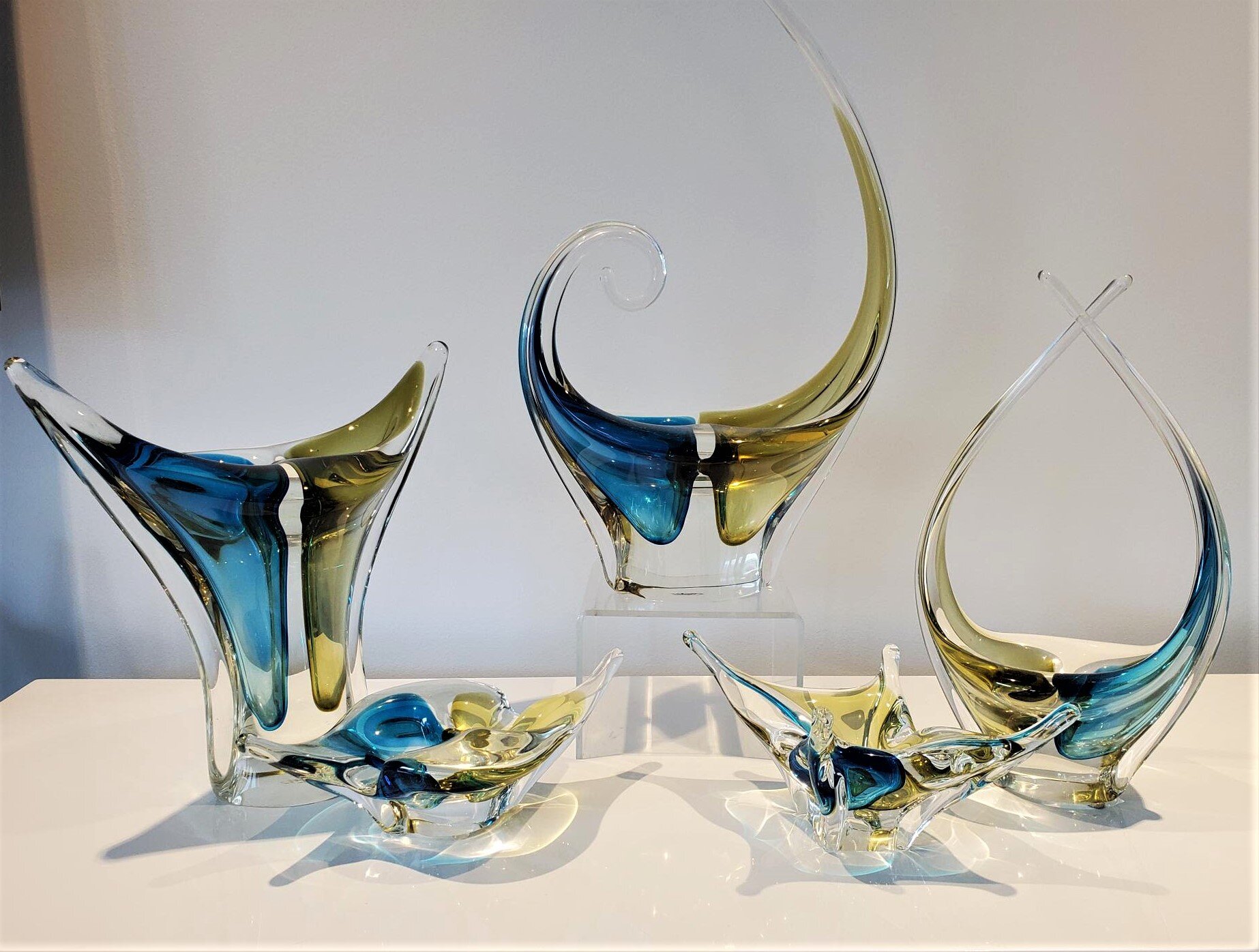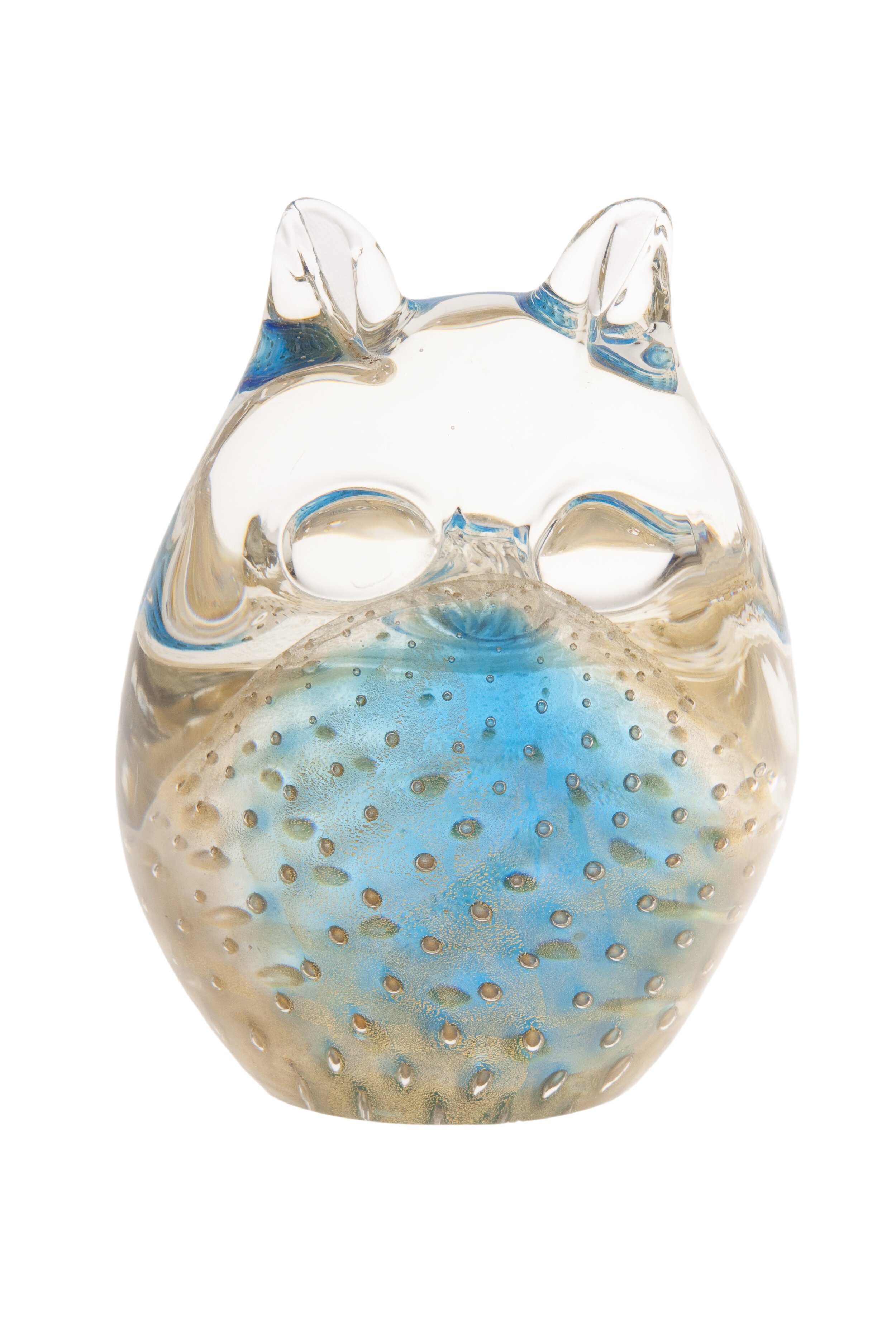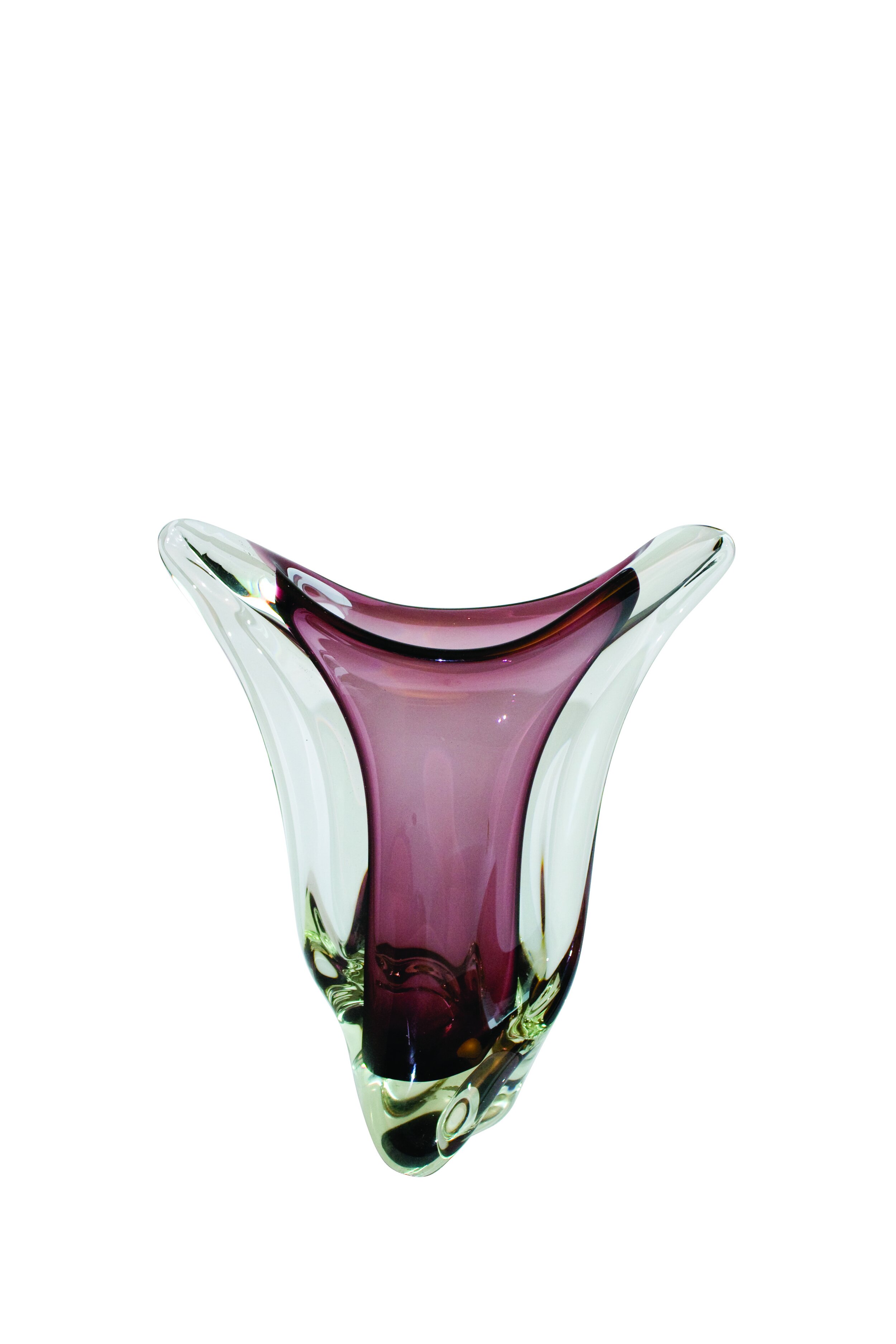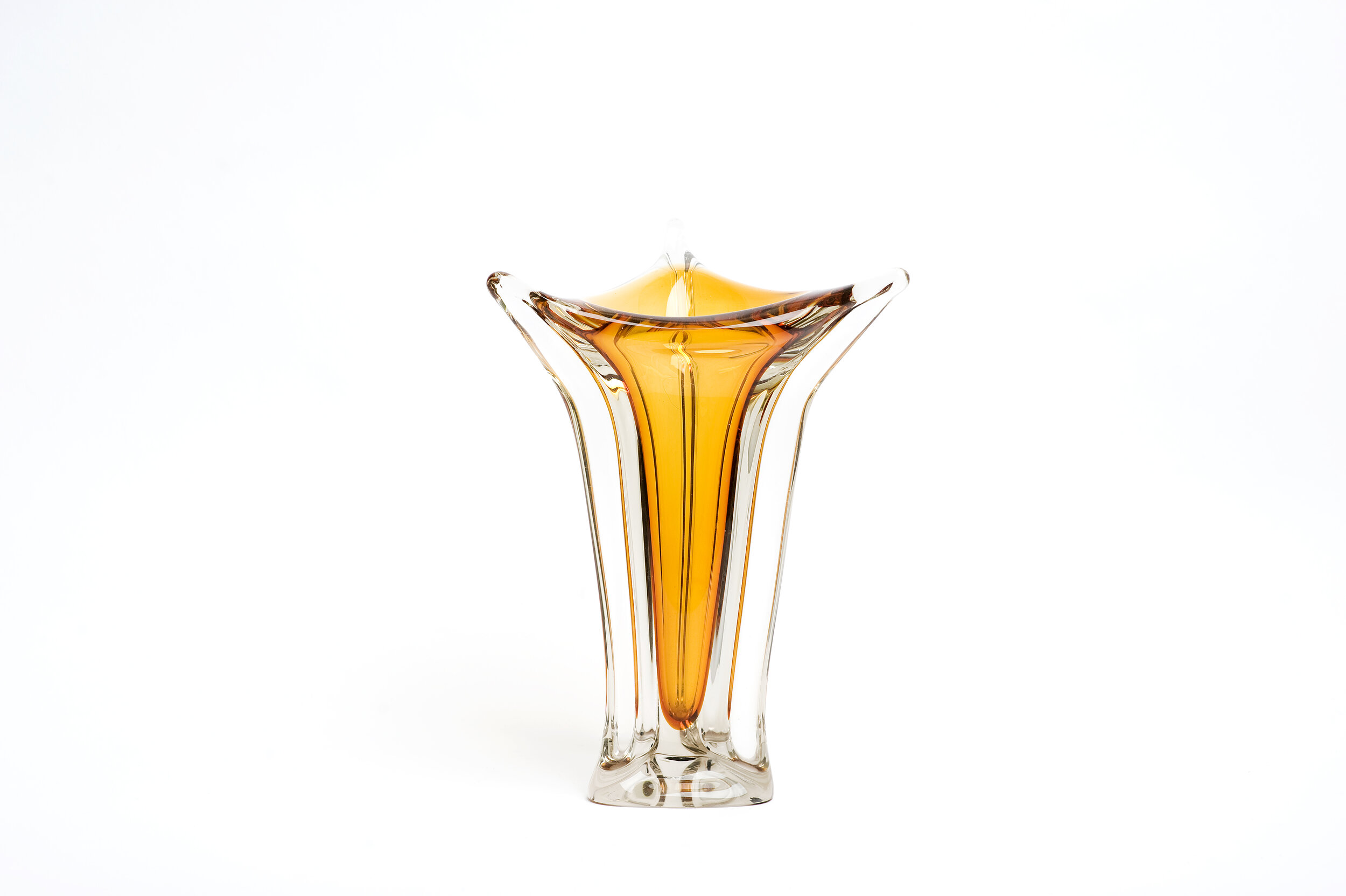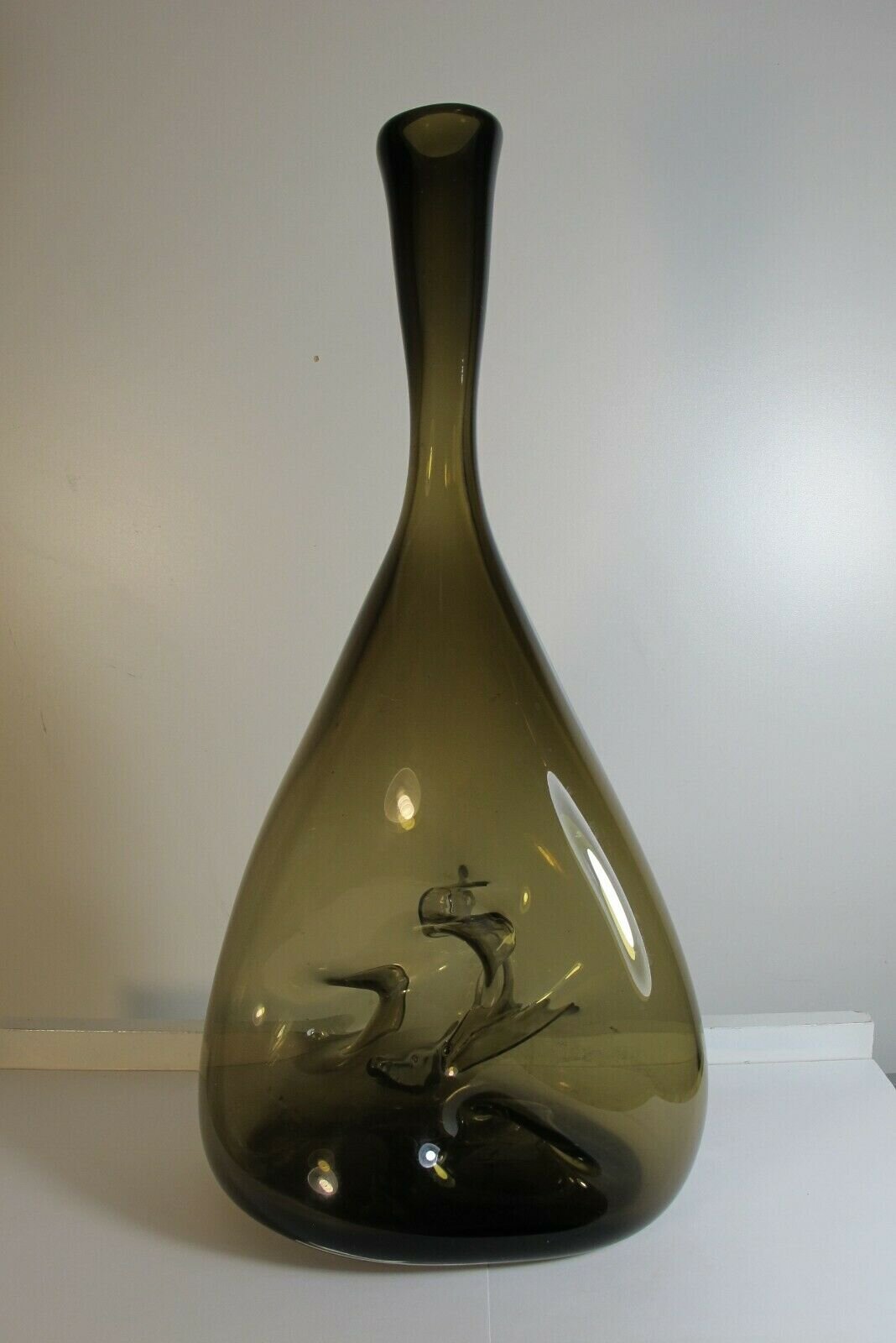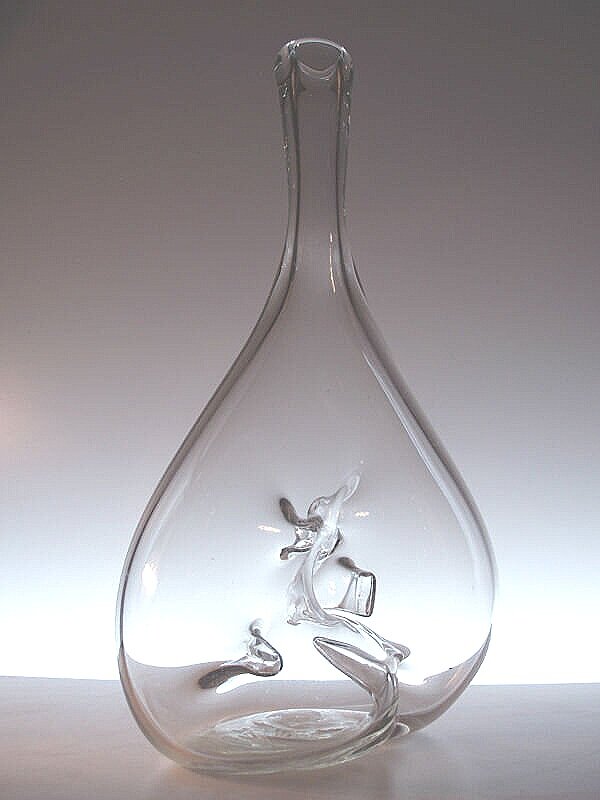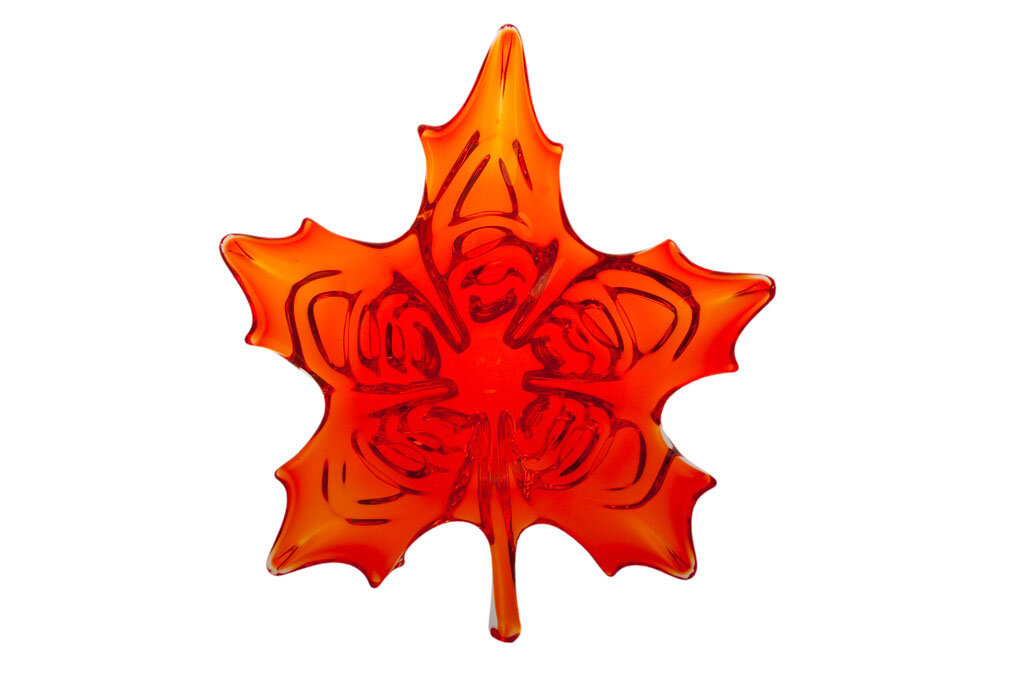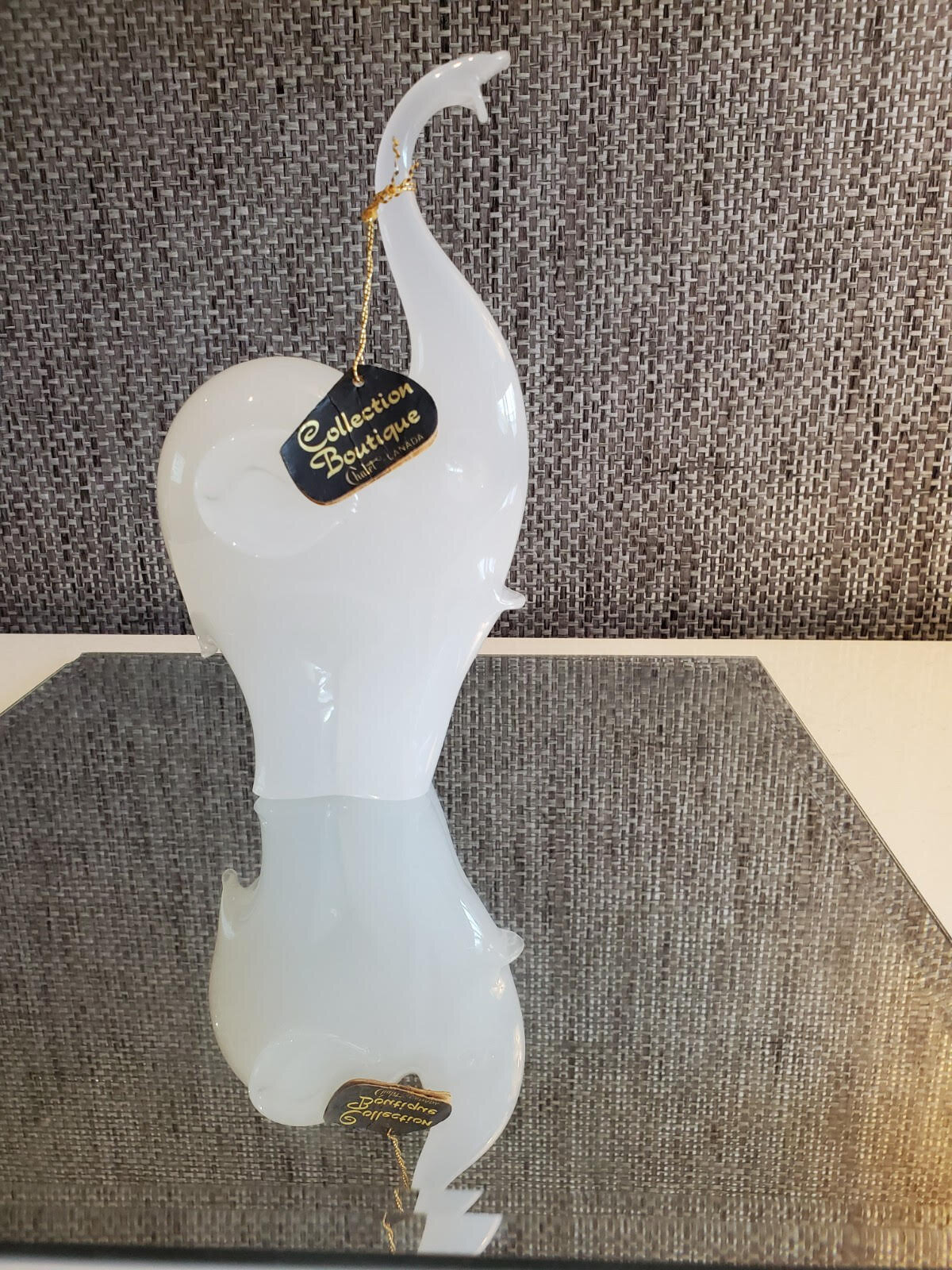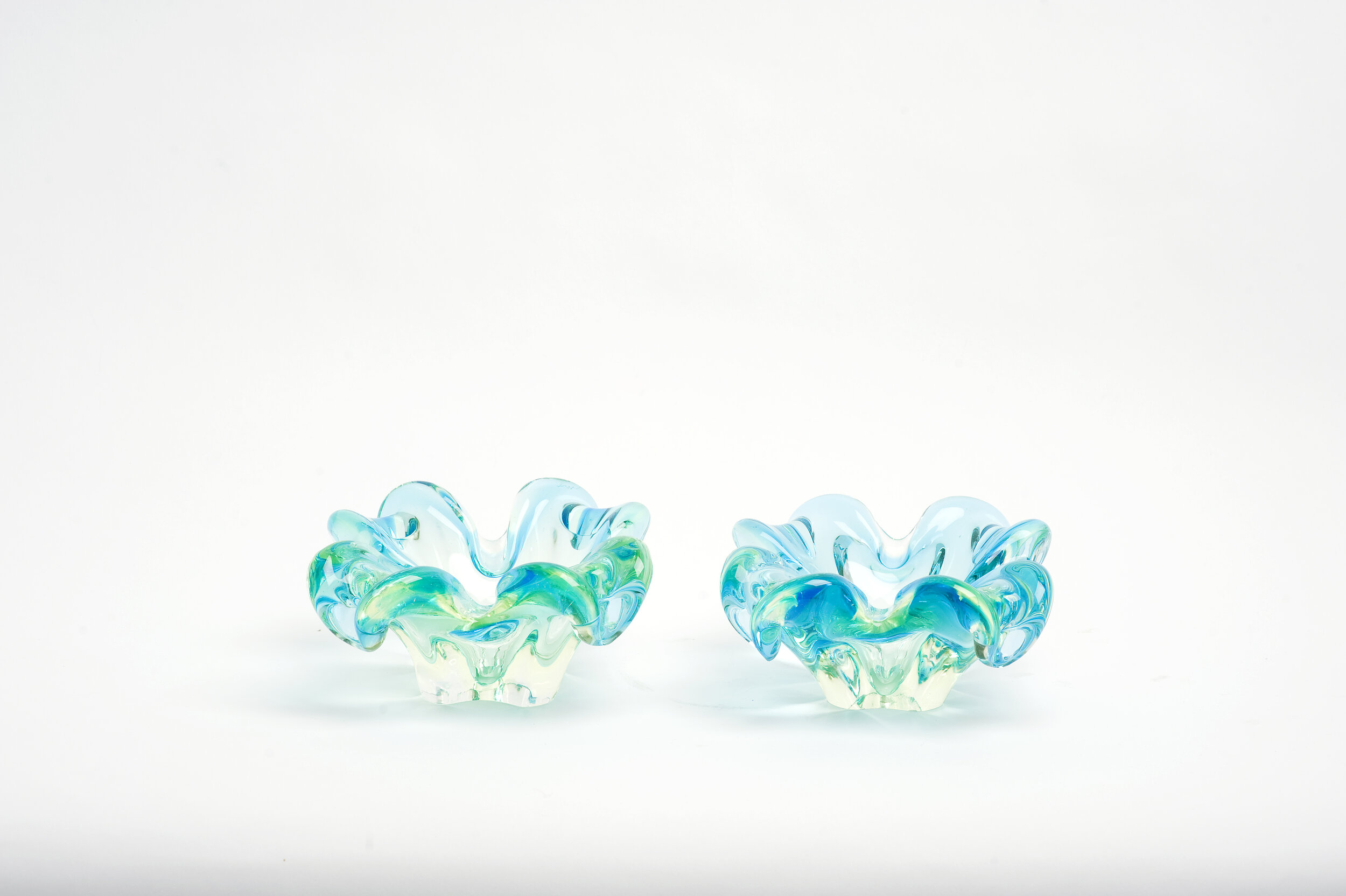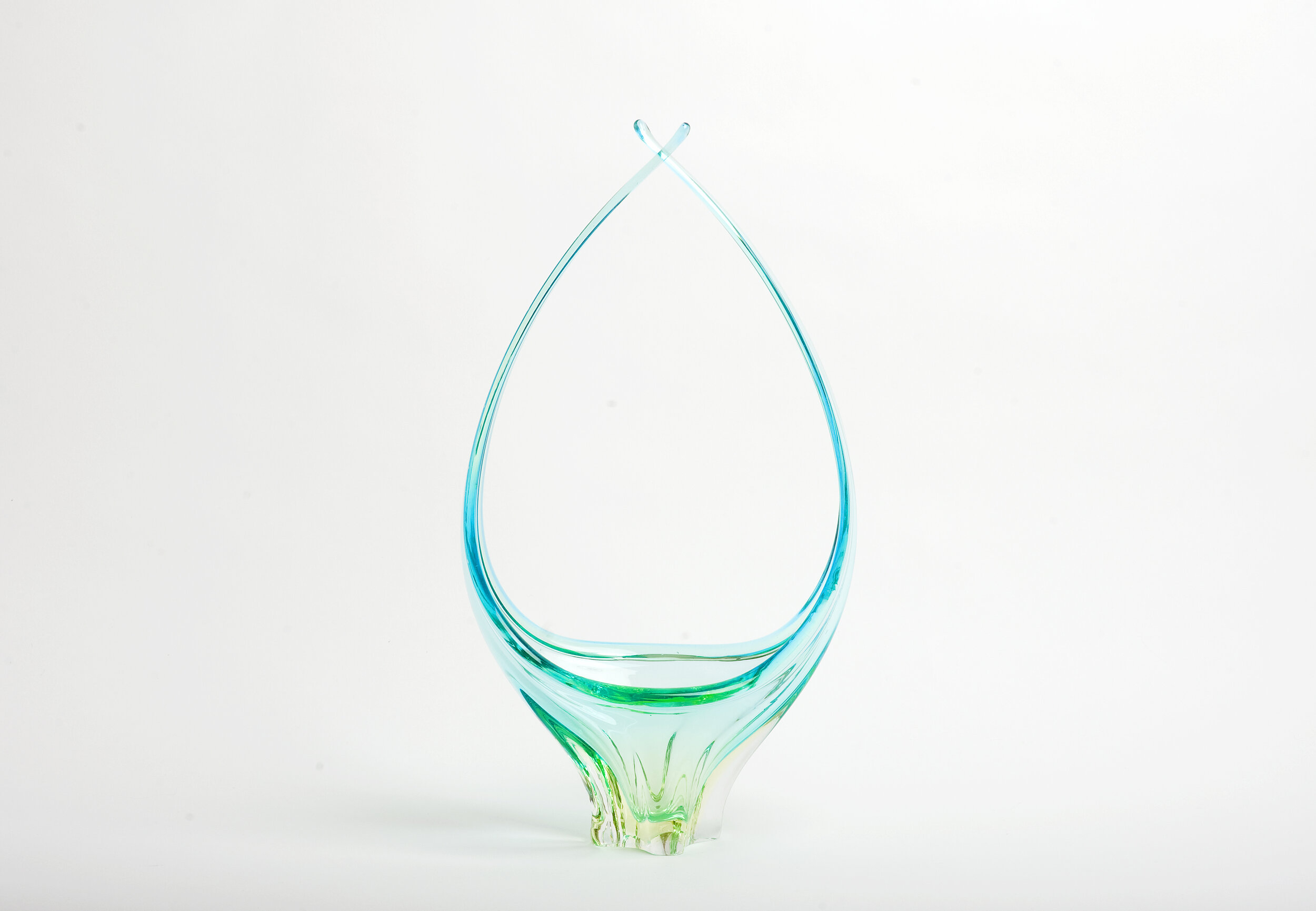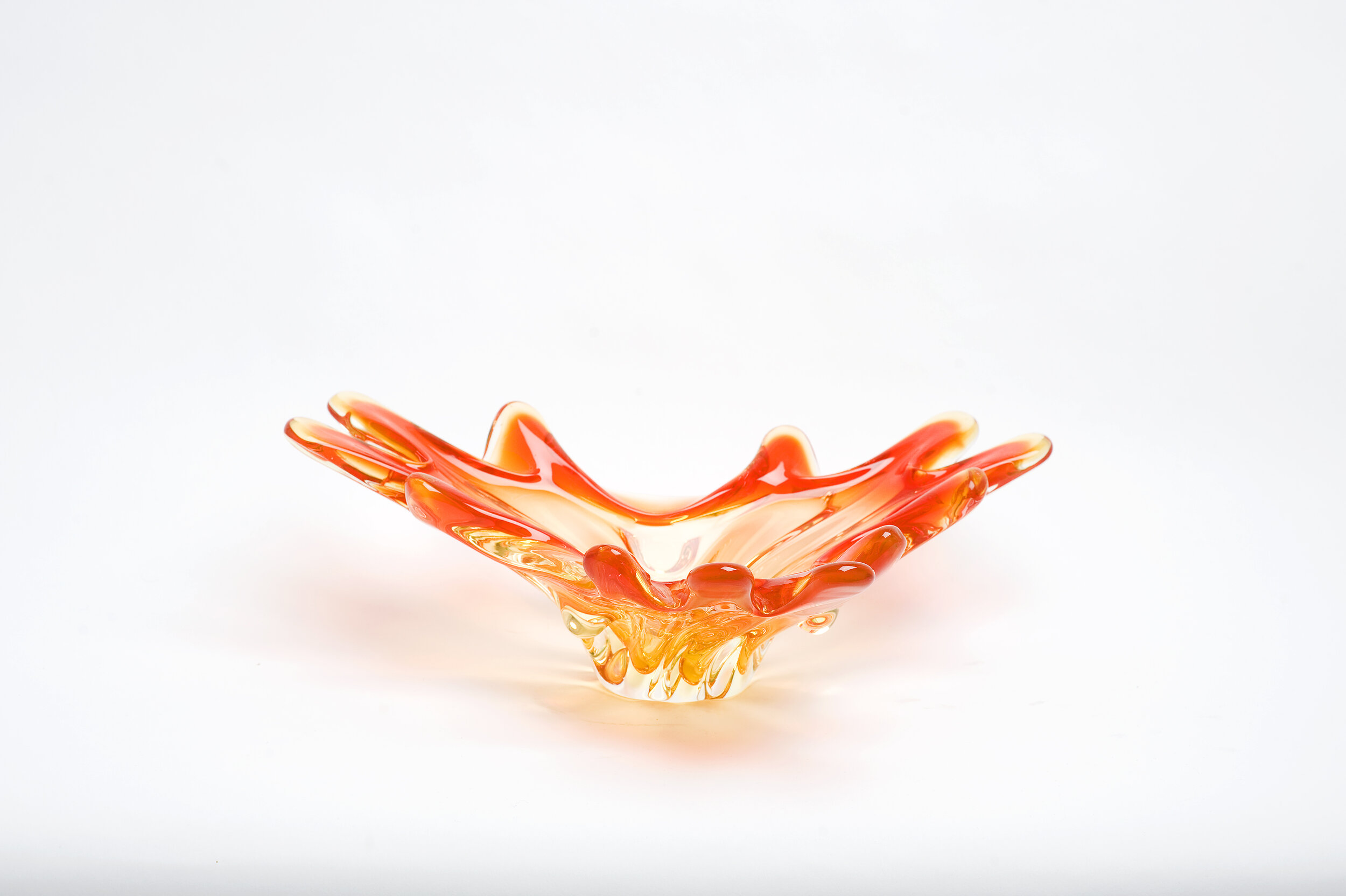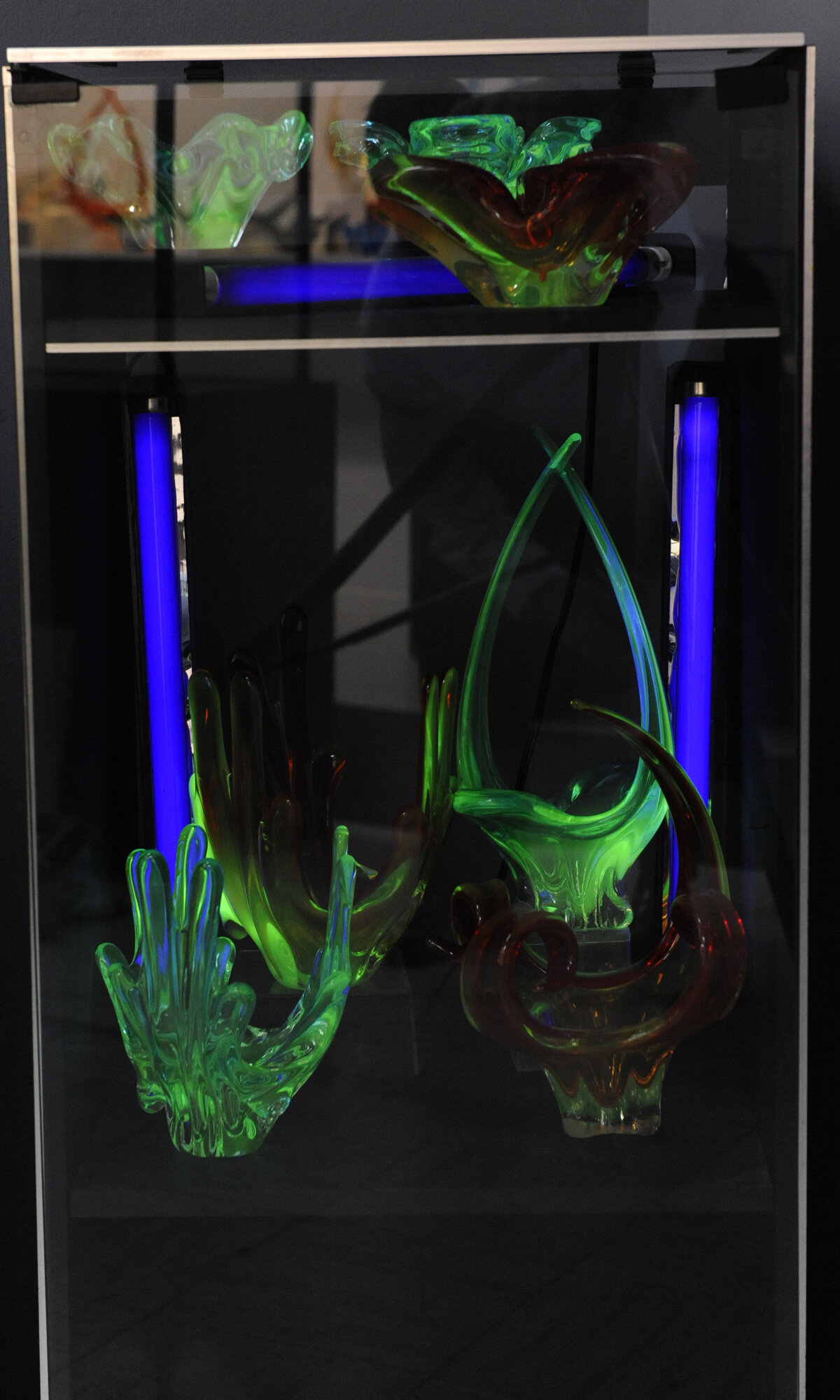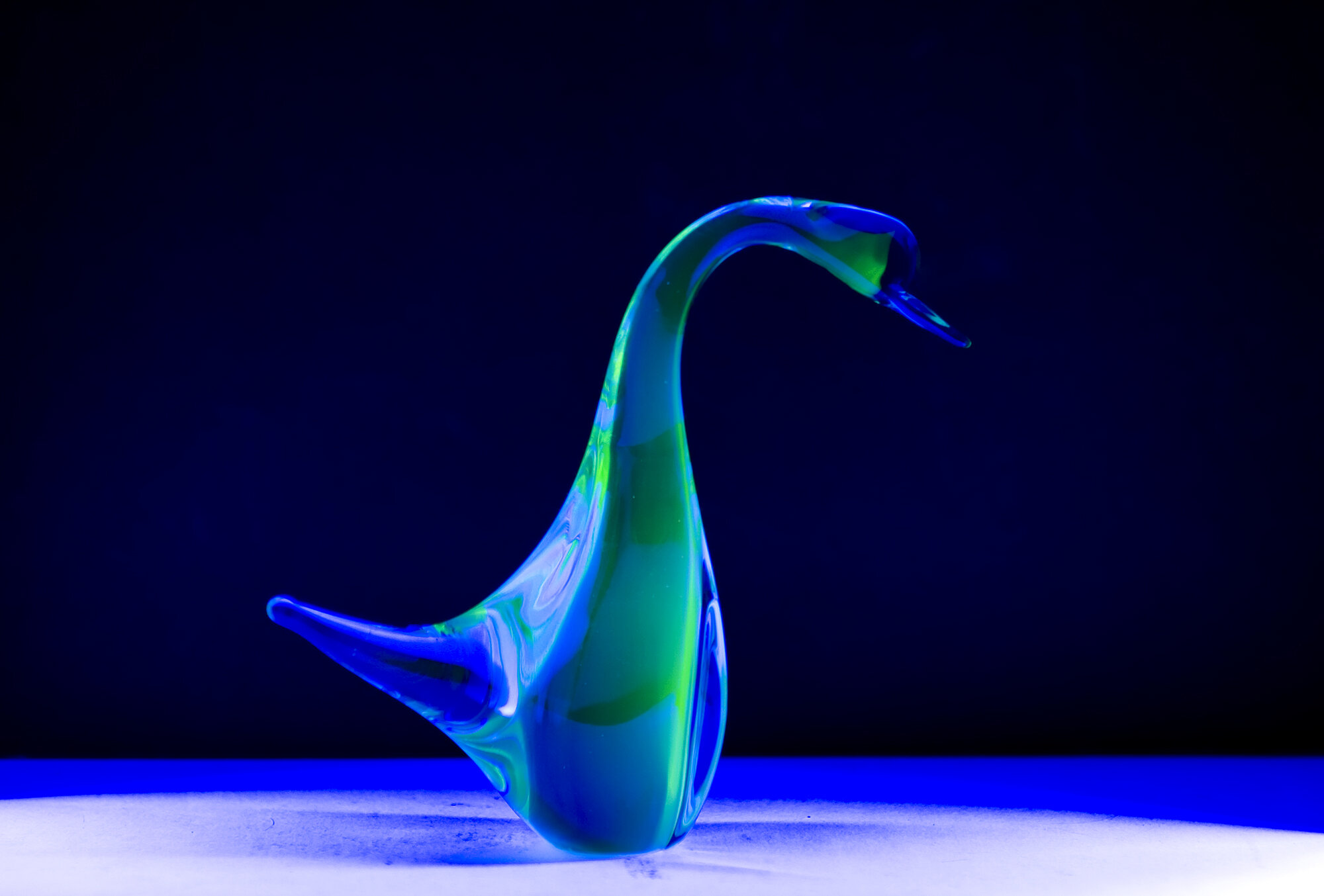Chalet “unicorns”.
When collectors talk about ‘unicorn’ or ‘grail’ pieces, they are referring to those elusive, sought after, “have to have” … pieces. Most typically, but not always, a “unicorn” is also a rare Chalet. Everyone has at least one that is particular to them but I thought it would be fun to show you the “Top 20”, (in my opinion), of the most eagerly and universally sought. If I haven’t included yours – let me know!
2 tones: Chalet did 2 tone pieces in quite a few colour combos but not in any great numbers. There are exceedingly rare Chalet pieces found in rose/blue, rose/green, purple/blue and orange/red. Very rare Chalet are amber/green, orange/yellow, yellow/green and cranberry/green pieces. They also did cranberry/blue which is seen more often. Still scarce but not rare Chalet is the blue/green combination. Chalet also did a very few 3 tone pieces as well which are the most exceedingly rare Chalet. Three of the rarer 2 tone examples:
2 tone divided: And then there are the very unusual olive green/turquoise with divided interiors. This line appears to have been very limited – one style of hook, 2 different vases, 3 shapes of ashtrays, 3 basket forms and a horizontal centerpiece
Centerpiece is from the collection of 50 Shades member Raymond Caron and was on display at the 2010 “The Art & Artisans of Chalet Glass” exhibit in Cornwall, Ontario.
Apple and Pear sets: although very rare, these were production pieces. Found in all the colours of the Chalet palette. Mouth blown. Leaf and stem have gold inclusions. Seen etched, stickered and with the “Boutique Collection” hang tag as well.
This set happens to have multiple Chalet brandings - stickered, hang tag and both bases are signed ‘chalet Canada.”
Animals with metallic fills: In Chalet silver foil and gold leaf animal figurines, small ultra-thin sheets of these metals were used. These silver or gold sheets were made by the precious metals having been beaten into an extremely thin leaf-like state of about 0.15 micron in width. To give you an idea of such a thin surface, this reflects about 20 grams of the precious metal covering six square meters. The sheets were then cut into small squares of about 8 cm. To infuse this gold or silver into the form, the Maestro started by rolling these small 24K gold or .925 silver sheets onto the hot glass mass during the early stage of glass-blowing. Once the gold leaf or silver foil covered most of the gather, he added a layer of clear crystal. Then, when he began to blow the glass, the metal sheet within the layers broke into smaller pieces which dispersed throughout the piece. This resulted into objects having scattered metallic pieces if differing sizes and shapes captured inside the form producing shimmering effects. These may appear close to the surface or submerged within deeper layers of clear crystal. There is no uniformity from piece to piece as you will see below. Both gold and silver are seen in some Chalet animals – namely elephant, polar bear, bird, owl, cat and fish figurines. These can be found in both clear crystal and coloured figurines and are sometimes done bullicante (with controlled bubble placement) as well . These are not to be confused with the more typical animal figurines from Chalet’s “Canadiana Wildlife line.” In the avventurina figurines, gold in the form of dust not sheets was use. It was added to the molten glass. To date, we have seen no large gold leaf or silver foil or avventurina Chalet pieces nor any in any size or style by Lorraine and EDAG.
Chalet Maestro Bruno Panizzon, 2011 studio shoot for “The Shapes and Colours of Chalet Glass”, with an avventurina (gold dust) and bullicante owl figurine and a silver foil polar bear figurine. Maestro Panizzon specialized in these pieces at Chalet.
Book Ends: The book end design is almost identical to the large apple and pear sets. The difference being that the book ends have straight cut side spots so that they are able to rest flat against and support the books placed between them. They have an applied crystal leaf and stem. The leaf has gold inclusions. For more details and pictures, please see the Bookend article.
‘Canada Art’ hand engraved pieces: the most mysterious Chalet branding. We know that it seems to have started after the company’s move to Cornwall and the subsequent name change in 1962 as we have found pieces marked with that date. Moreover, many pieces engraved ‘Canada Art’ are featured in Chalet’s early “Items Available” brochure. However, we do not know why they were marked in this manner, who did the engraving or when the engraving ceased. There are many theories! Some of the pieces are unusual while some are very ordinary. Many marked ‘Canada Art’ forms can also be found etched with the ‘Chalet Canada’ signature or bearing labels.
Vase on left is etched ‘Chalet Canada’ while vase on right is engraved ‘Canada Art.’
A less typical piece with the engraved ‘Canada Art’ signature Photos courtesy of 50 Shades member Andree Cayer.
Vase is engraved ‘Canada Art’ with the 1962 dating as well.
‘Canada Art’ engraved. Basket is BB1 (see 4th row, second in from left) in the early ‘Items Available’ Chalet brochure.
Candleholders: while Chalet did candleholders in quite a few styles (both hand blown and hand molded), most collectors seek the heavy leaded crystal pieces. These are featured in the early ‘Items Available’ brochure shown above as well so we know that they were done from the outset but obviously in limited numbers as so seldom found. The early styles shown there, C41 and C44, are exceedingly rare.
The early ‘tornado’ style – C41. Photo courtesy of 50 Shades member Alex Wicks.
We assume a later ‘tornado’ version of the C41 shown above.
They are most often etched ‘Chalet Canada’ but are also found with the FASCINATION PAR C.M. etching. Those pieces are styled a bit taller and slimmer.
The Chalet ‘molar’ candleholders. This style was done in a 2-tone orange/red as well as in all the solids of the Chalet palette.
-Christmas trees: extremely popular among collectors. Limited
production item - made September through December by a team of 1-3 artists. Distributed in both Canada (Chantili and N. C. Cameron) and the United States (Riekes Crisa). Production sizes were 6”, 8”, 10” and 12” but large rare non-production sizes of 16 and 17 inches have also been found. Made in green and clear crystal. 2 distinctive bases – a round, “ball” base and a “cone’ shaped base. This display holds 2 of the 6’ trees – foreground middle and left. Note the different bases. The large tree in the left background is 16” – a non-production height. The 8” green tree in the rear has a “coating of ice”.
Chalet also produced ring trees - see article. They are very similar to the “Christmas” trees but 9” high with branches curling upwards. See 3 trees on the right in picture. The green trees were also made without this crystal casing.
This tree retains its original N. C. Cameron and Sons label.
Don Shepherd for Chalet bottles: a line of bottles/decanters in dark olive/brown and clear crystal. Interestingly, it is known that American artist Don Shepherd had some sort of role in their design. However, it is not known whether he participated in their production. There appear to have been about a dozen designs. Here are 2 of the varieties.
Don Shepherd for Chalet vases: a line of large vases in dark olive/brown and clear crystal was also done for Chalet. Again, it is known that American artist Don Shepherd had some sort of role in their design. And once again, it is not known whether he participated in their production. There appear to have been about a dozen designs. Here are a few examples.
Fingertip vases: not rare but scarce. This form is one of the most hunted by Chalet lovers. Comes in the whole range of the Chalet palette as solids and found as well as in several 2 tones and the uranium. Very rarely seen is a completely pale “pink” – achieved by using cranberry colouring,
Madonna: my ultimate unicorn. To date, we only know of this figurine through a newspaper article photograph and a historical picture. These were made to hold a rosary when not in use and given to those taking their First Communion. Produced in very low numbers as demand was so limited.
See the Madonna figurine at right on table, beneath sign, in middle of photograph. Taken in the Chalet showroom. Date unknown. Chalet artist Antonio Tedesco, kneeling, with his niece Fiorella Pagnin and his nephew Francesco Pagnin. Son and daughter of Chalet Maestro Sergio Pagnin. Sergio was also one of the company owners and its chemist. He is best known for designing the face prunts found on many pieces in the cranberry in crystal and cranberry lines.
Maple leaves: limited edition production. The Government of Canada commissioned these centerpieces to showcase at the Canadian Habitat pavilion at the 1967 World Expo in Montreal. They were to be an example of Canadian excellence. Produced in 12” and 14” diameters. The 12 inch were commonly distributed while the 14-inch piece were given as gifts to dignitaries and taken abroad with trade delegations. Produced in all the colours of the Chalet palette as well as the blue/green 2 tone colour combo.
Minis: not a production line item as were the ‘piccoli’ pieces done by Lorraine Glass Industries. Can either be the “little brother or sister’ to common production sized forms or unique styles. May be marked or not. Found in a wide range of colours – some typical of the larger forms while others not.An extremely rare example of Chalet minis - very few animal figurines are done as “piccoli”.However, cat figurines have also been found.
These Chalet piccoli are atypical in colour and shape from the larger Chalet forms. All etched with the Chalet Canada signature. These minis can be found in bright emerald green, amber, red and a salmon as well.,
Mushroom figurines: very, very popular and quite scarce. Done in 1 size (3” height) and 4 colour variations.
Opaline animals: exceedingly rare. To date, we have seen very few forms -a polar bear and elephant were done in solid white. As well, a cat sitting on its haunches and a rooster have red, blue and butterscotch as well. I suspect that the latter two may be ‘one-of-a-kind” pieces.
Paperweights: there are no catalogue pages or inventory numbers for the Chalet paperweights. When they were made and by whom is a total mystery. They were most typically egg shaped, produced with intentional inclusions, usually measured between 3-4” in height and were produced in 4 designs – the iris, the “DNA spiral”, the “confetti” and the “sea anemone”. And, with the exception of the multi-coloured “confetti”, were done in 2 colours. There is also a completely clear crystal egg and a flat amber bullicante paperweight. The latter, to date, being one-of-a-kind. For more pictures and details regarding all of the Chalet paperweights, please refer to the paperweight video and article here on the Web site.
Splash vases; an iconic Chalet form and a favourite for collectors. Produced throughout the company’s operation. Scarce. Seen in all the colours of the Chalet palette as well as the blue/green 2 tone colour combo. As well – a few exceedingly rare amethyst vases have been seen.
Early version of the ‘splash’ from the collection of Brad McGillivray, 50 Shades member.
As shown in the early “Items Available’ brochure.
The evolution of the ‘splash’ form. Later production design.
The ‘splash’ vase on the right is a very rare, non-production variation.
Tornado vases: this style loved by collectors. The smallest height (5”) is found more often than the larger. The larger are rare and are found in 8,9,10,11 and 12 inches heights. Done in the common colours of the Chalet palette and one royal purple vase has also been found. See above in ‘Candleholders’ to see this style in another form.
5” vases. Production colours. All etched ‘Chalet Canada.’
Rare in colouring as well as marking. This 5” vase bears both the etched Chalet signature as well as the Birk’s etching.
Olive 5” vase, amber 8” vase and 12” olive vase in the background. The amber vase is marked with the FASCINATION PAR C.M. etching.
Uranium Chalet: Uranium oxide, when suitably prepared, produces colours of great vividness. First used by artisans in pottery glazes and glass. Antique glass that contains uranium is often referred to as “Vaseline Glass”. A nickname given in the 1920’s to pieces that glowed as there was a perceived resemblance to petroleum jelly. Commercial usage in Canada of uranium was off and on again up to 1968 - supply was determined most often by catastrophic world events. It was widely used before World War 1 and then banned but following World War 2, usage of uranium in civilian productions was again allowed. As a result, during the 1950’s, there was a great boom in uranium mining in Canada - we were and are the greatest producers of uranium in the world. However, due to the health and environmental risks associated with uranium and disposal of its waste, in 1963, the U.S and Great Britain declared a moratorium on widespread uranium use in civilian applications. Debate in Canada regarding these same issues began in 1967 and ended in 1969 with the same moratorium. France allowed civilian use of uranium until 1980 and, some countries, like China, still allow uranium use in the production of goods such as glassware.
Chalet Artistic Glass was registered with the American government’s Nuclear Materials Management and Safeguards System because of the company’s use of depleted uranium in its glass – a fact of which the Chalet artists were unaware. EDAG also produced pieces which contain uranium. Lorraine Glass Industries, however, did not. Chalet stopped using uranium, along with several other ingredients, with the Canadian government ban. The risk to the workers was not only through inhalation and ingestion but through dermal contact and injury – something to which glassblowers are prone.
Uranium is not only found in many of the orange and aqua-coloured Chalet pieces, but it has also found in a few pieces of cranberry/green cranberry and clear and clear animal figurines and bombonniere. It can be detected under a UV light which causes the glass to fluoresce (emit visible light) green. Most often it glows with a brilliant radiance but sometimes weaker as pieces with a very high lead content will cast less of a glow. A wide range of Chalet forms contain uranium – ashtrays, fingertip platters and vases, centerpieces, stretches, baskets, a few animals and bonboniere. Here are just a few.
As you can see, my photographer had fun taking this piece, black light and editing to the nth degree.-
The Chalet artists had no idea that they were working with uranium. When they saw the black light display at the 2010 “The Art & Artisans of Chalet Glass” exhibit, they were absolutely speechless.
Cranberry and green uranium is the rarest of rare!
Other exceedingly rare chalet uranium pieces are a very few animal figurines and bomboniere basket.
Photographs courtesy of 50 Shades member Jo Highland.
You will find more detailed information and hundreds more photographs in both reference guides - ‘Chalet Crystal Clear’ and ‘The Chalet Artistic Glass Collectors’ Guide & Catalogue.’ In addition, please investigate the ‘Resource Library’ in the ‘50 Shades’ FB group for tutorials on many of these pieces and subjects. Love if you would leave a remark, ask a question or make a suggestion in ‘Comments’ here - directly following. Will respond promptly!
